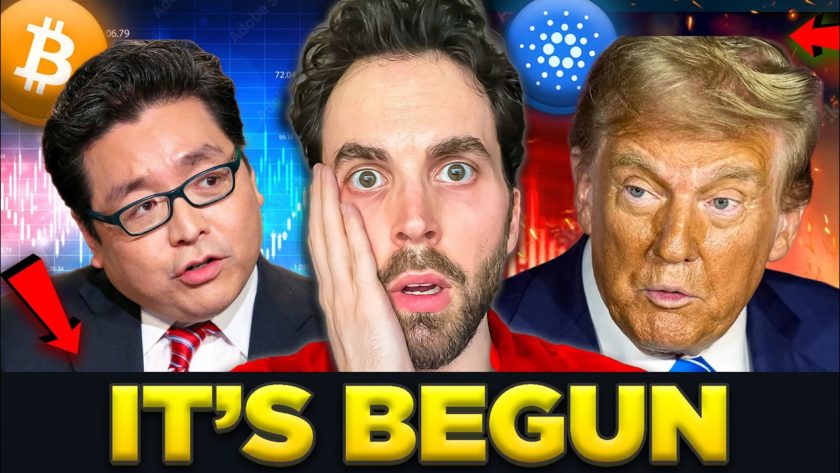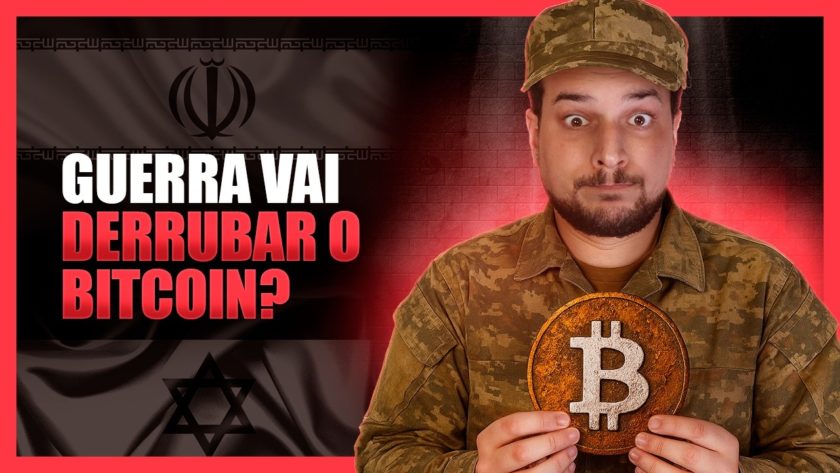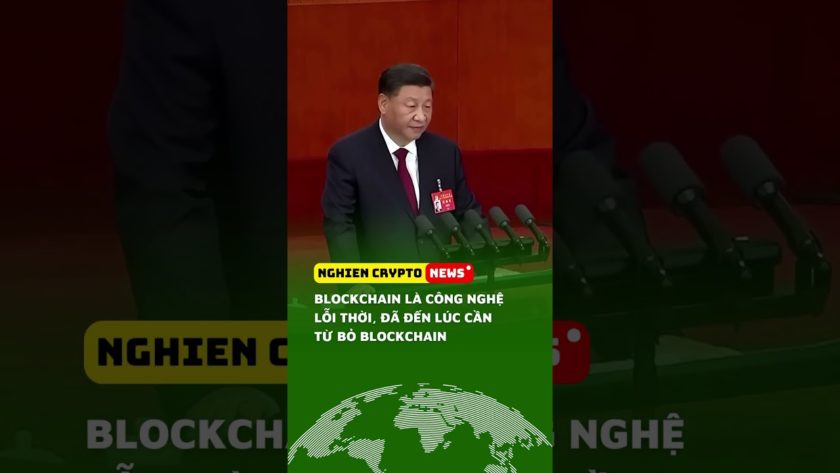Gaming company Atari has launched this week its Atari Capsule Collection featuring non-fungible token (NFT) collectibles based on classic video games Centipede and Pong.
The collection, curated by two of Atari’s most notable creators Dona Bailey and Al Alcorn, was developed in partnership by Atari and Animoca Brands, a Hong Kong-based digital entertainment company that specializes in blockchain gaming.
NFTs — a unique, non-interchangeable (non-fungible) digital asset whose authenticity and true ownership is tracked on a blockchain — have exploded in popularity in the digital art, gaming, sport and music sectors. As NFTs get increasingly mainstream, artists, musicians, content creators and brands are racing to release their own unique digital items even as some question if it is all hype and a speculative bubble.
“And now it’s really a race of brands to bring these collectibles,” Yat Siu, co-founder and chairman of Animoca Brands, told in a Forkast.News in an interview about the growing popularity of NFTs and why he thinks gamers will bring about mass blockchain adoption.
Siu, who was born in Vienna, Austria, is a classically trained musician who plays the piano and cello. He is also a member of the advisory board of BAFTA (British Academy of Film and Television Arts). He began his career at Atari Germany in 1990. In 1995 he moved to Hong Kong to establish Hong Kong Cybercity/Freenation, the first Asian free web page and email provider. In 1998, Siu set up Outblaze, a white-label software-as-a-service provider, and sold Outblaze’s services business to IBM in 2009.
In 2014, Siu founded Animoca Brands. Originally a traditional gaming company, Animoca has repositioned itself to specialize in blockchain and artificial intelligence technologies in gaming. The company’s current portfolio of games includes The Sandbox, Crazy Kings, and Crazy Defense Heroes, as well as products utilizing popular brands such as Formula 1®, Marvel, WWE, Garfield, Snoopy, Power Rangers, MotoGP™ and Formula E.
See related article: Blockchain Adoption Starts with Gamification — Yat Siu, Animoca Brands, on the Future of Crypto
Animoca is the publisher of the first blockbuster NFT game, CryptoKitties, in China, Hong Kong and Taiwan. CryptoKitties allows players to adopt, raise and trade virtual cats, and was one of the earliest successes in deploying blockchain technology in gaming. Animoca Brands reported record revenue of US$38 million for the 10 months ended 31 October 2020, as the company saw a growth in gaming activities due to pandemic lockdowns around the world.
The following Forkast.News interview with Siu has been edited and condensed.
What’s driving the rise in NFTs in gaming?
NFTs are actual property rights, represented in the form of a token, but effectively property rights with actual utility. With gaming in particular, the utility is clear. You use the assets inside the game, and there’s very clear value in terms of, why you need it, why you use it.
NFTs in the gaming space have become a pretty big force now because people play the game for a purpose and buy the assets. And then because of decentralized finance (DeFi), the assets started to appreciate in value, because of the true ownership, because people started using these assets — you can get loans on NFTs, you can fractionalize them, you can lend them. All these things that you can do, which is physically what you can do with your assets in the real world, but with digital assets was impossible before.
See related article: Guide to tokens and NFTs: what is ‘tokenization’ and how does it work?
And because of Covid, everything gaming is generally on the rise. Engaging virtually online has now become a lifestyle and a norm, as opposed to a momentary thing. Gaming has become very social because you can meet in the same social spaces. You see this with Animal Crossing, you see this with Roblox, you see this with all sorts of games out there that have become social platforms because we can’t meet in person. With games, you’re now able to engage deeper socially because you have other things to do. The best icebreaker is playing a game together. And so, before maybe you’re playing volleyball, now you’re playing an online game, it’s the same thing, you’re playing a game together.
So these macro trends on gaming pull everything else into that space, including NFTs and blockchain assets in the game.
Animoca Brands is experimenting with combining traditional free-to-play gaming with play-to-earn and blockchain features such as NFTs, DeFi and governance in the Crazy Defense Heroes and Crazy Kings games. What’s the thinking behind the experiment?
We always felt strongly that the gamers will bring mass blockchain adoption because we have familiarity and comfort with virtual assets in the virtual world. You don’t have to tell us why I should buy a virtual sword, and you also don’t have to explain to me why I should buy virtual currency, because I do that every day anyway.
Free-to-play games are designed to be inflationary in order to generate revenue at the expense of a game’s virtual assets, whereas blockchain play-to-earn games typically seek to generate value for their virtual assets.
We think play-to-earn is the future, and we think that the future of work actually involves us spending time in these virtual worlds.
The gaming industry is valued at US$150 billion and US$70 billion comes from free-to-play. The free-to-play conversion average metric is 1.5%. Now if we manage to bring 1.5% to 3%, which doesn’t seem that crazy, we’re actually doubling the industry.
And so, the thesis that we have is, if we’re able to do this and create true ownership of these assets, then the conversion rate should be higher. If I could have ownership, I’ll pay for it and pay more value for it. In blockchain gaming, that is true. Every person who plays blockchain gaming has ownership, stickiness is really high at 70%, 80%. Stickiness is super high, because you’re invested in it. In contrast, in free-to-play, stickiness is a big problem.
What the Crazy Kings and Crazy Defense Heroes experiment is about, is to basically bring in blockchain as a way for gamers to earn value, and allow them to have a say in how the game is run.
A non-blockchain savvy player can simply play the game and earn tokens by farming. As he farms the tokens, there may be a point where he might identify that there’s some value in those tokens, and he can then choose whether he wants to spend the tokens on buying NFTs in the PC version, which is the blockchain native game, or he can also use his tokens to cast a vote in terms of what the market wants to see being made in the game.
See related article: Are blockchain game voxels the new square foot?
Where we are also very different here is that unlike other projects, there is no fund raise for the token. The token is 100% in its initial launch farmed, which is truly community driven.
We have a very vocal, active community that has many ideas about what the game should have. Someone who plays the game longer perhaps deserves a better vote because he knows the game better as opposed to someone who just joined the game last week. Likewise, a player can potentially buy tokens from someone else if he wants to have more of a say in a matter. So there’s a mechanism to blend a kind of value economy with free to play games.
Setting up a cryptocurrency wallet may be a barrier for non-crypto players. How are you designing the onboarding process for the game?
Opening a wallet to play a game, even though simple, can be quite intimidating for a first-time user. We’re taking the view that although onboarding should be as simple as possible, we can’t do it at the risk of you losing your assets. So we need to change the motivation, which is to open the wallet when you have value, not open the wallet before you have value.
For example, if you go to The Sandbox, you need to have a wallet first even if you don’t have any crypto. That’s a barrier for a non-crypto person. The experience that we’re designing here is for you to play the game, generate tokens, and when you see that your tokens have value and you want to trade them out, then you open the wallet and do the KYC, because you have a reason to do that.
What do you think about Dapper Labs (the company behind NBA Top Shot) and others bringing adoption of NFTs by making it easy for people to buy it with just their credit cards?
We’re fortunate to have been one of the earliest shareholders in Dapper Labs. We were the Greater China publisher for CryptoKitties so our relationship with Dapper Labs goes back to 2018. We’ve been working with them for a while and on that note, the sports collectible MotoGP is on Flow as well.
The Dapper team has created adoption by going for an audience that appreciates the collectible aspect really strongly, who don’t have crypto, they’ve used their credit cards to buy the NFTs. Now because they’ve built their own chain which is Flow, they don’t have the same issues of gas prices, that’s the benefit.
I think ultimately them and others are going to bring adoption in terms of the onboarding. That doesn’t mean that you can’t do the same thing on Ethereum, it’s just the question of who eats the gas. Because there is a transaction cost. And the way that I look at transaction costs, ultimately every network that is resilient must have some cost, otherwise who’s paying for it.
See related article: 74% of stablecoins are issued on Ethereum, according to new report
If the payment on that network is centralized, you’re at risk of all the centralization risks. But if the payment is decentralized, then the motivational network to maintain a sort of stable fragmentation is necessary.
Now with ether (ETH), the issue is not that the cost of gwei is high, it’s the fact that ETH is high and so gwei is high for new people into the space. If you look at the overall NFT volume on Ethereum, not on Flow or elsewhere, it’s actually all-time high. And so the argument that high gas costs kill this, actually kind of falls flat on that basis.
And the reason why it falls flat is because if I make assets in ETH and I think in ETH, then actually it doesn’t seem that expensive. The amplification comes because most new entrants don’t make money in ETH so their entry price is a conversion price and it looks like 40 or 80 or 100 dollars, and it’s like, oh my goodness, why would I spend it? But if you bought ETH a year ago or you make money with ETH in some form, then actually it’s not that expensive. So it’s relative to the players in the space. But to bring mass adoption, you do need solutions such as Flow or Matic or WAX. The side chains on the new layer one protocols are all solving part of the problem for mass adoption.
See related article: NFT mania: Are blockchain art and NBA crypto collectibles a fad or the future?
Ultimately, we think these assets will flow in every chain, meaning they’re not going to sit in one or the other. They will transfer across chains as they should. And they’ve demonstrated that there is demand with these digital assets, not just some crazy crypto guys, but basically mainstream demand is possible.
And now it’s really a race of brands to bring these collectibles. So for us, we’ve got MotoGP, we’ve got Formula One, Formula E, they’ve got NBA, other brands coming as well. So these are all things that we’re adding to sort of increase the collectibles space.
How do you see the current NFT boom — is it driven by speculators or collectors?
The vast majority of people who buy NFTs buy to hold, though of course there are people who see profit in buying and trading. In contrast, people who buy tokens you could argue, are quite speculative — 99% of the time, projects list a token that has yet to find utility. The point is that people don’t have a strong utility for the token, so it is really for speculation.
But in the case of NFTs, that’s different, because an NFT is by its nature, not very liquid. And so if you’re willingly making an investment in NFT, you’re willingly accepting that liquidity is lower, which means you want it, you want it for what it is. You’re making a statement whether this is art, whether this collection, whatever it is, it is something personal to you.
And that’s what art is, you’re not buying a Picasso so you can sell it tomorrow. And that’s the collector argument. Even people who buy NBA Top Shot or physical NBA cards, the audience is the same. They’re not thinking, wow, I can sell this tomorrow and flip it. It’s like, it’s great I have this card, I am the owner of that art or movement or whatever, and maybe I’ll sell it later. The pride of owning it is greater than the pride in the fact that you made money.
See related article: Justin Sun: Next generation traders will prefer NFTs and DeFi
For many of the token traders, it’s the other way, it’s like, I had a good call, made a great investment like a stock, a great investment and the value is in the return. For NFTs, the value is in owning it, and saying, I owned it, I was part of that. It’s a smaller space so it doesn’t have the same volumes as fungible tokens, but the result of that is that you have a more stable ecosystem and frankly, more price resilience actually.
NFTs or digital assets being transferable, interoperable. Do you see that being a trend moving forward?
This is perhaps for us, one of the most important things for NFTs to really be the center of what we consider the content revolution. One of the issues that the internet brought about, and actually Bill Gates coined this, is that content is king. And to an extent he was right, because content is super important and with the Internet everyone could make content and distribution would be available to everyone.
But the problem was that distribution became very cheap as well, in fact it became so cheap that you couldn’t find anything because there was too much content. And so the platforms that aggregated the content and curated it for you ended up becoming the dominant place. And the counter-quote that then came up was, content is king but distribution is the queen, and she wears the pants because you cannot actually do anything without distribution. How successful would Game of Thrones be without HBO, or Mario without Nintendo, or can you have any games on the app store without the app store.
We think that content, games or platforms in the future will be built to benefit the assets you own, as opposed to right now where you have to bring your assets to the platform for discoverability — the content becomes the platform as opposed to the platform delivering the content. This creates this creative revolution where creators themselves have control over what’s going on, and if their content is widely used then their content will become more valuable across the board.
See related content: Beyond NFT’s hype: Artists and crypto experts take a hard look at NFTs
Open digital assets — NFTs are like open digital assets —are to us the equivalent of open source code. So nobody is today going to think of proprietary code in the same way, it doesn’t make sense. You cannot possibly compete with open source because you have millions of brains building the best output, and so you’d rather contribute to that pool. That’s why open source is probably one of the best examples of decentralization and perhaps one of the best examples of where the Internet did succeed in sort of this sort of approach.
But when it comes to content, it couldn’t do that because content became cheap, because the internet was a giant photocopier that kept copying cheaper, cheaper and cheaper, literally to the point where you couldn’t even identify you were the creator. With blockchain you have that provenance, you know who was the original creator, and you can trace it back.
And the value element means that I can add stuff up on top of the open digital assets and add more value. If I buy a car, I’ve the freedom to paint it, I’ve the freedom to change the seats and the freedom to do whatever I want. And I’ve the freedom to sell it for more money if I think it’s more valuable because I did all sorts of funny things. So we’re adding layers of experiences on top of these assets that give value, which is what we do in the real world. We just didn’t have a way of doing it in the digital world until now.
Do you see assets from one game going to other games and interoperating in the future?
Absolutely, and transferability. Nobody said that an asset has to exist in the same way — who said that a Formula One car has to be a car in a medieval game, it could be a shield, or be whatever. This is a digital world, why do you have to restrict yourself to the traditional thing.
Another thing is that in the future, games will be designed around adding value for the digital assets. In games today, virtual assets or virtual goods exist to support the game. The game doesn’t exist to support the assets. The assets are here to support the game.
But a successful game in the NFT world means that the game design has to be built around creating value for the asset you own, which mimics the real world. The game design has to be around adding value to the assets, the virtual NFT, virtual goods, which is basically taking the whole concept upside down. It’s a completely different approach for game design.
What about regulatory concerns?
At the moment, the law is pretty clear in most places, which is that NFTs are not considered securities. When you issue tokens, you need to be more careful. You need to make sure that there’s clear utility and different countries have different rules around it.
We are early in this game and if the industry moves to where we think it will, then it is absolutely necessary for regulation to start stepping in because you have real money involved.
The places that are progressive are the places that will attract the talent to go there. This opportunity for economic activity is going to be the natural friction of, too much regulation will hurt it, too little regulation will hurt it too, where do we find the middle ground, and the place that finds the appropriate middle ground is going to be the one that will benefit the most from this sort of pull.
What is your outlook for NFTs, especially in Asia?
Generally speaking, NFTs are the representation of true digital property rights. So Asia and the world will have the same event, which is what happened when we went from feudal to capitalist industrial societies — an economic explosion and wealth creation. And then when free trade came about, economic free trade also created massive new wealth, because assets and goods could travel around, and all the financial services that built around it exploded as well.
That’s what happened in history, and that’s what will happen in the digital world with NFTs because those NFTs represent these property rights. We have 2.7 billion people right now playing games, that spend in total US$150 billion dollars, which is more than music and film combined.
You could say we’re living in a US$100 billion virtual economy — what happens if you turn that US$100 billion economy into an ownership one? We think it will be worth trillions. And so this is not just in Asia. This is global, and this will be a whole new shift as revolutionary as the Internet was.
A lot of people comment around things like, so why don’t we just go with one chain or another chain or whatever. In our case, we want to go with all the chains. For us, it’s really important because it’s not just about decentralizing our assets, it’s also ensuring that the discovery and the platforms that host these assets are also decentralized. In other words, we need to have choices in order for content to really flourish, you’ve to be democratic.
If you think about the app store, you could argue that the app store has removed a lot of democratic elements in terms of app discovery. They’re trying hard but by virtue of their dominance, it is no longer democratic. If there were thirty app stores to choose from with roughly equal distribution, that’s more democratic. And maybe each of them are a little smaller than the other, but the ecosystem will be bigger because we’ll have many more content creators as opposed to just the ones that could be featured.
That’s how we should look at the future of blockchain as well, and that’s how we should look at the future of content discovery. We need more choices, which is better for creators, and plays into creating a more creative future.




